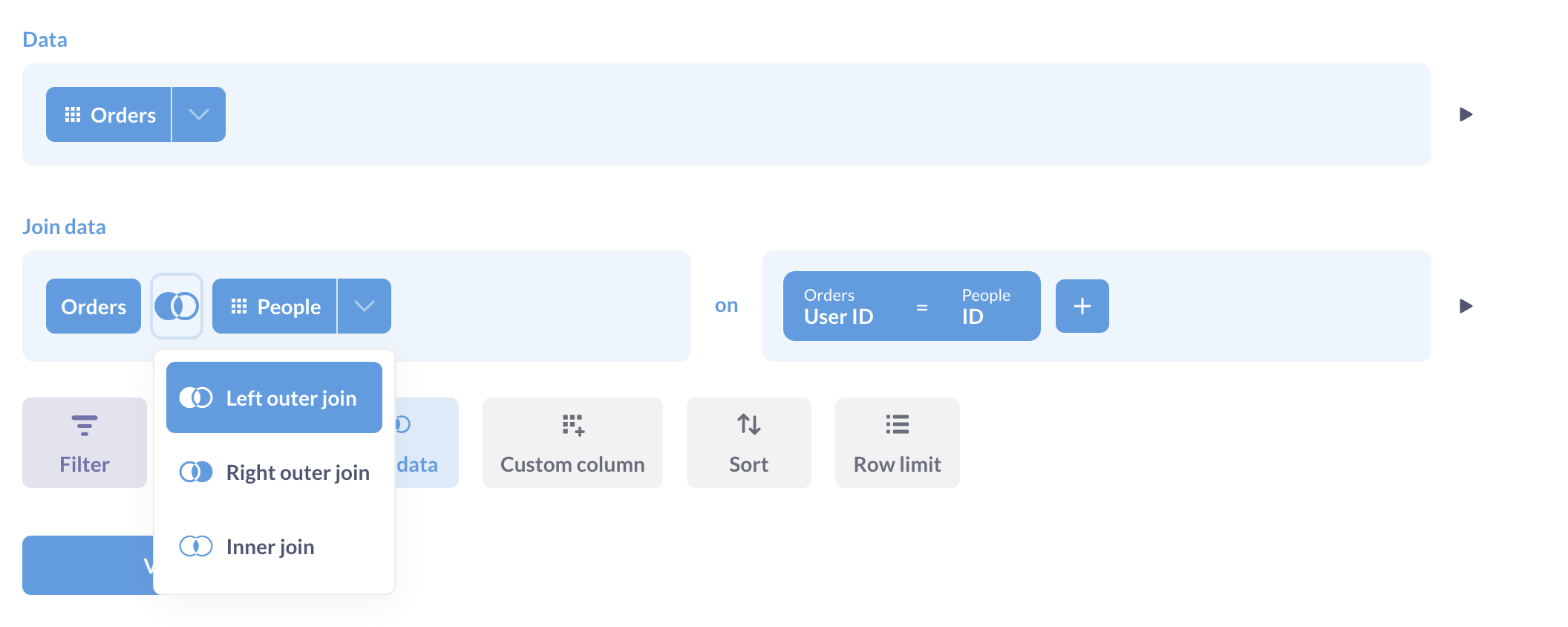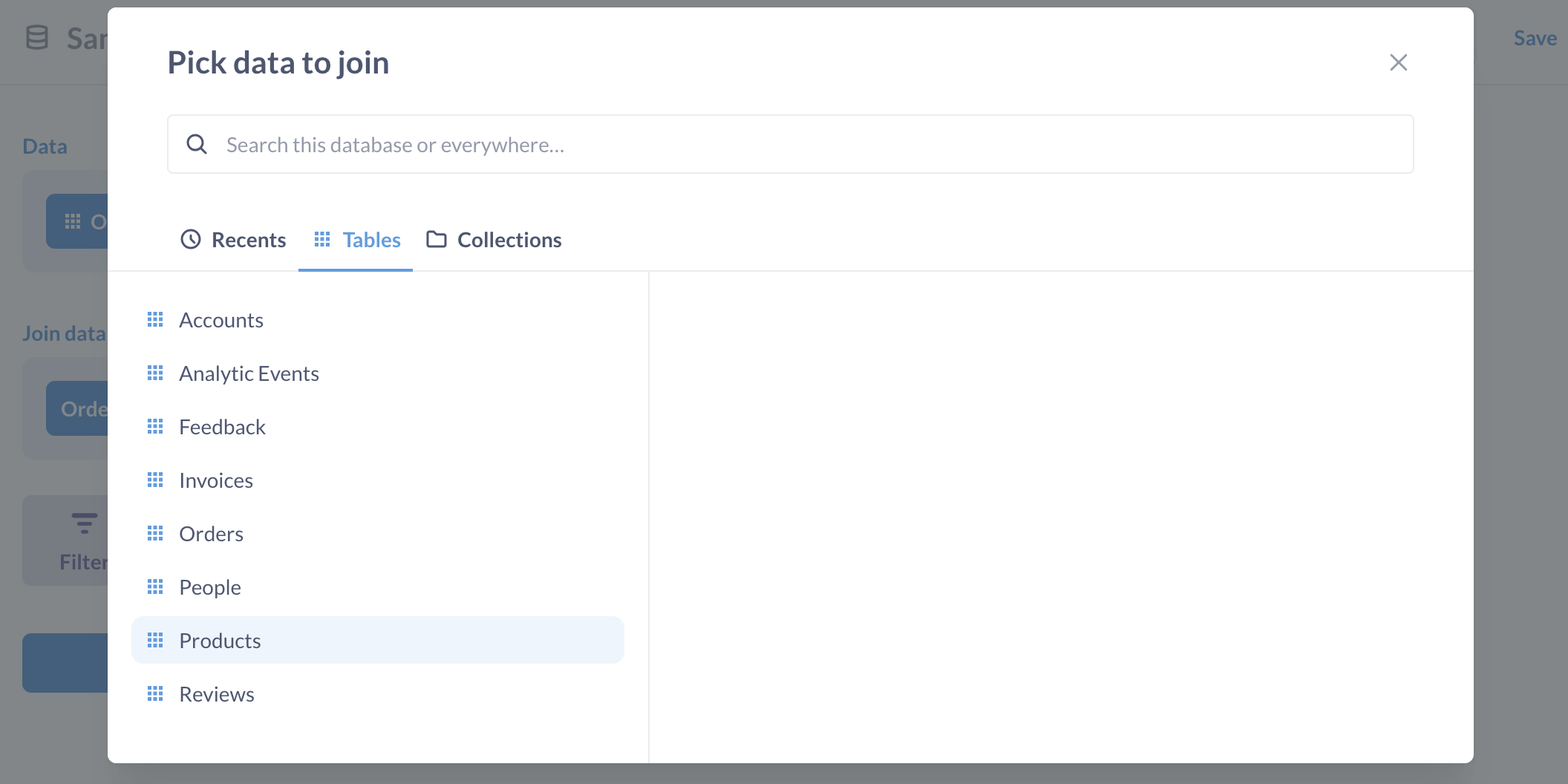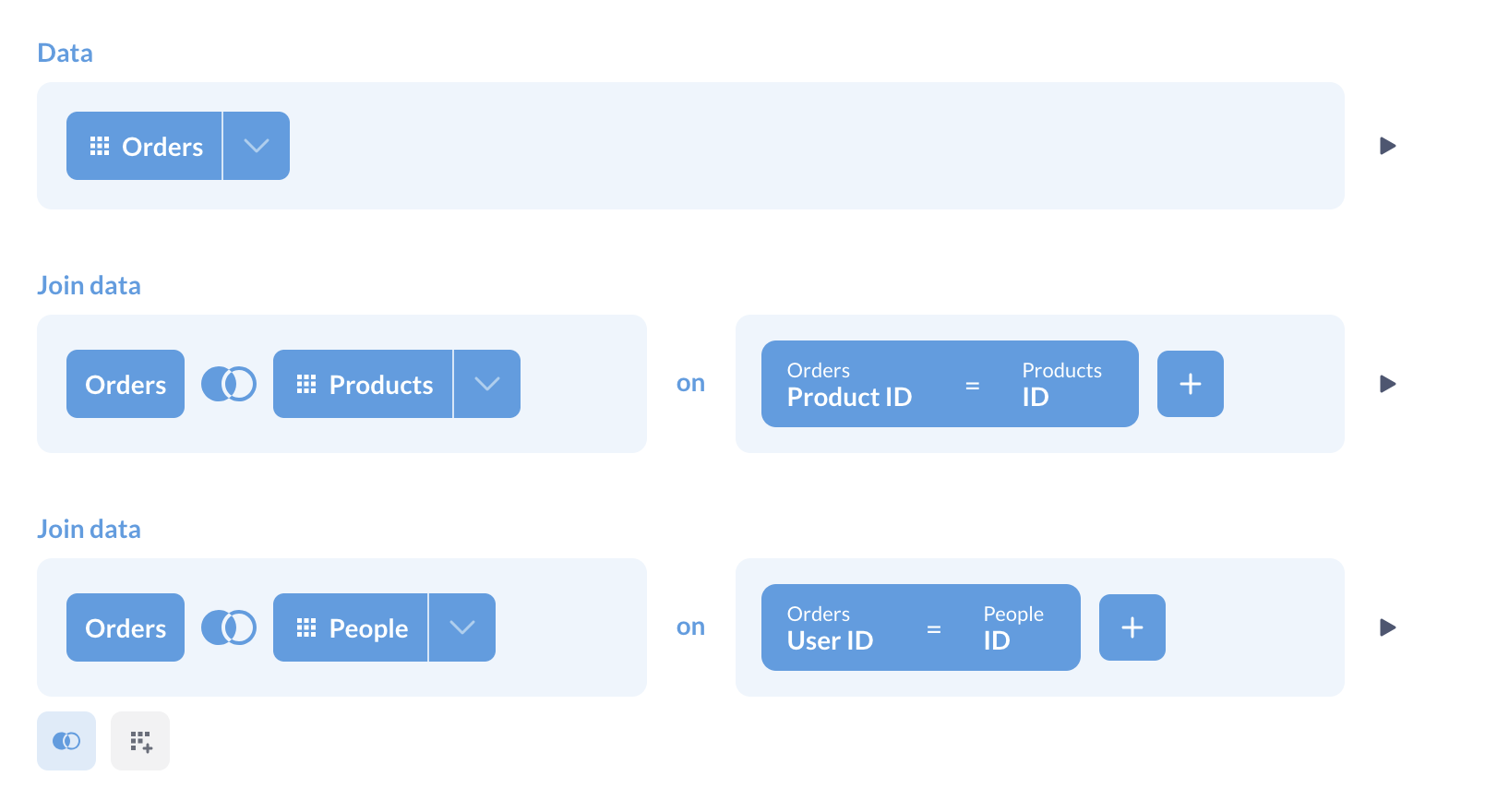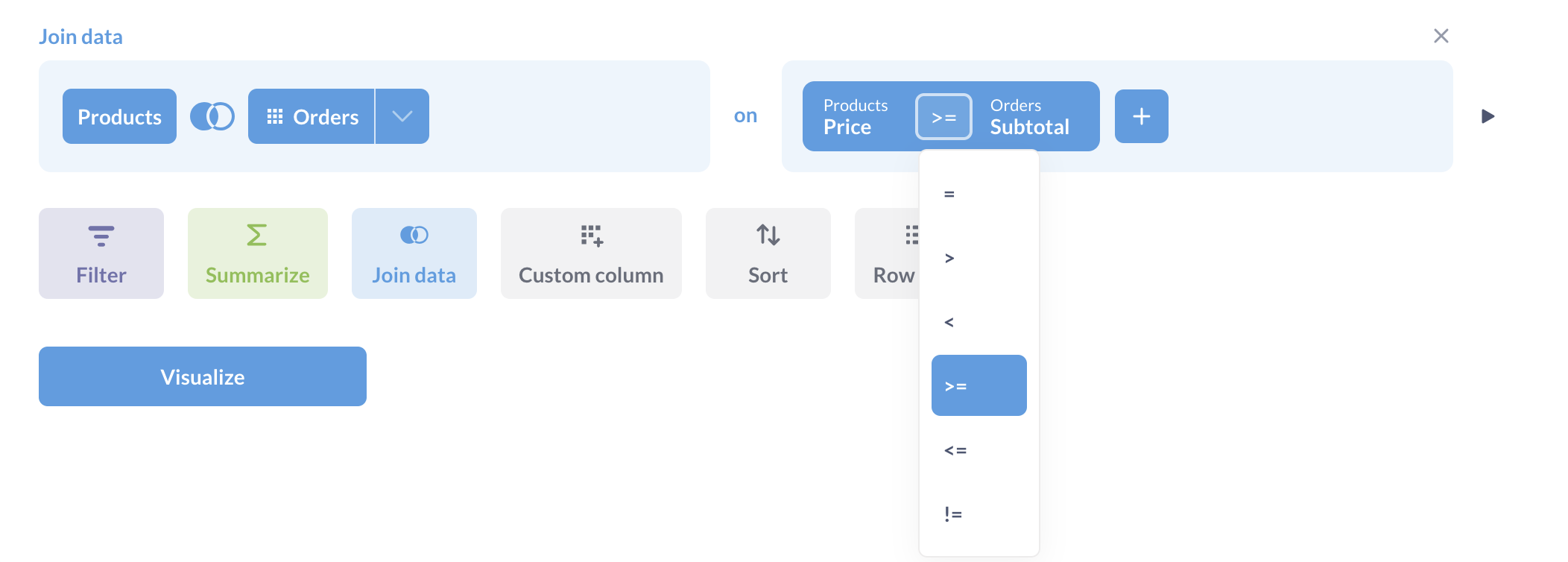These are the docs for the Metabase master branch. Some features documented here may not yet be available in the latest release. Check out the docs for the latest version, Metabase v0.49.
Joining data

You can join data to combine your current data with another table, or even with a saved question.
After you click on the Join Data button to add a join step, you’ll need to pick the data (from the same database) that you want to join. You can only pick tables and saved questions that are from the same database as your starting data.

Next, you’ll need to pick the columns you want to join on. This means you pick a column from the first table, and a column from the second table, and the join will stitch rows together where the value from the first column is equal to the value in the second column. A very common example is to join on an ID column in each table, so if you happened to pick a table to join on where there is a foreign key relationship between the tables, Metabase will automatically pick those corresponding ID columns for you. At the end of your join step, there’s a Columns button you can click to choose which columns you want to include from the joined data.
By default, Metabase will do a left outer join, but you can click on the Venn diagram icon to select a different type of join. Not all databases support all types of joins, so Metabase will only display the options supported by the database you’re using.
Here are the basic types of joins:
- Left outer join: select all records from Table A, along with records from Table B that meet the join condition, if any.
- Right outer join: select all records from Table B, along with records from Table A that meet the join condition, if any.
- Inner join: only select the records from Table A and B where the join condition is met.
- Full outer join: select all records from both tables, whether or not the join condition is met.
A left outer join example: If Table A is Orders and Table B is Customers, and assuming you do a join where the customer_id column in Orders is equal to the ID column in Customers, when you do a left outer join your results will be a full list of all your orders, and each order row will also display the columns of the customer who placed that order. Since a single customer can place many orders, a given customer’s information might be repeated many times for different order rows. If there isn’t a corresponding customer for a given order, the order’s information will be shown, but the customer columns will just be blank for that row.
Multiple stages of joins
In many cases you might have tables A, B, and C, where A and B have a connection, and B and C have a connection, but A and C don’t. If you want to join A to B to C, all you have to do is add multiple join steps. Click on Join Data, join table A to table B, then click the Join Data step below that completed join block to add a second join step, and join the results of your last join to table C.

Joining on multiple conditions
Your joins can also include multiple conditions to refine your results. Metabase will combine multiple conditions using the AND operator.

Joining with different operators
You can join tables on comparison conditions like =, ≠, >, ≥, <, or ≤.



